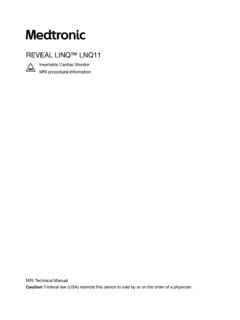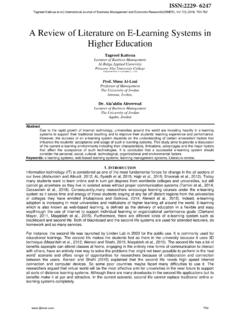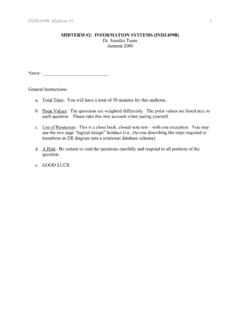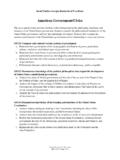Transcription of AZURE™ MRI SURESCAN™ / ASTRA™ MRI SURESCAN™ MRI …
1 AZURE MRI SURESCAN / ASTRA MRI SURESCAN . pacing SYSTEMS. MRI procedural information for SureScan pacemakers and SureScan leads MRI Technical Manual Caution: Federal law (USA) restricts this device to sale by or on the order of a physician. The following list includes trademarks or registered trademarks of Medtronic in the United States and possibly in other countries. All other trademarks are the property of their respective owners. Astra, Azure, Capture Management, CareAlert, CareLink, CareLink Encore, Medtronic, Medtronic CareAlert, Medtronic CareLink, Quick Look, SureScan Contents 1 Introduction 4. About the system 4. 2 MRI conditions for use 4. Cardiology requirements 4. Radiology requirements 5. Patient monitoring and rescue requirements 6. Training requirements 6.
2 3 MRI warnings and precautions 7. 4 Potential adverse events 7. 5 Patient monitoring requirements 8. 6 Cardiology-specific considerations 8. 7 Radiology-specific considerations 8. MRI considerations 8. 8 Pre-MRI scan operations 9. Identification of SureScan pacing system components 9. Required patient care 9. 9 Performing an MRI scan 9. SureScan pacing system integrity verification 10. Programming the MRI SureScan feature to On 10. Device considerations 11. 10 Following the MRI scan 12. Returning the device to the pre-MRI configuration 12. 11 Medtronic warranty information 12. 12 Explanation of MRI symbols 13. 13 Service 13. 3. 1 Introduction About the system The Medtronic SureScan pacing system is MR Conditional and, as such, is designed to allow patients to be safely scanned by an MRI machine when used according to the specified MRI conditions for use.
3 When programmed to On, the MRI SureScan feature allows the patient to be safely scanned while the device continues to provide appropriate pacing . The MRI SureScan feature must be programmed using a Medtronic programmer and the Azure MRI SureScan/Astra MRI SureScan programmer software. It is important to read this MRI Technical Manual before conducting an MRI scan on a patient with an implanted SureScan pacing system . Contact a Medtronic representative if you have further questions. Note: The button labels and navigation instructions in this manual apply to the Medtronic Model SW030 software on a Medtronic CareLink Model 2090 Programmer or a Medtronic CareLink Encore Model 29901 Programmer. The details of the user interface are provided for reference only and may not match those of other applications.
4 Refer to the appropriate Medtronic device and reference manuals or lead technical manuals for non-MRI. related instructions for use. 2 MRI conditions for use A complete SureScan pacing system is required for use in the MR environment. A complete SureScan pacing system includes an Azure MRI or Astra MRI DR IPG with two SureScan pacing leads, or an Azure MRI or Astra MRI SR IPG with one SureScan pacing lead. To verify that components are part of a SureScan system , visit Any other combination may result in a hazard to the patient during an MRI scan. Warning: Do not scan a patient without first programming the MRI SureScan mode to On. Scanning the patient without programming the MRI SureScan mode to On may result in patient harm or damage to the SureScan pacing system .
5 Note: The MRI SureScan mode cannot be programmed to On if the device is recommended for replacement. Cardiology requirements Patients and their implanted systems must be screened to meet the following requirements: The patient has no implanted lead extenders, lead adaptors, or abandoned leads. The patient has no broken leads or leads with intermittent electrical contact, as confirmed by lead impedance history. The SureScan pacing system is implanted in the left or right pectoral region. The pace polarity parameters are set to Bipolar for programming the MRI SureScan mode to On. The SureScan device is operating within the projected service life. For patients whose device will be programmed to an asynchronous pacing mode when the MRI SureScan mode is programmed to On, no diaphragmatic stimulation is present when the paced leads have a pacing output of V and a pulse width of ms.
6 Caution: It is not recommended to perform an MRI scan if the right ventricular (RV) lead pacing capture threshold is greater than V at ms for pacemaker-dependent patients. A higher pacing capture threshold may indicate an issue with the implanted lead. 4. Radiology requirements The safety and reliability of the SureScan pacing system has been evaluated for scanning patients using MRI. equipment that has the following operating characteristics: Scanner type Horizontal field, cylindrical bore, clinical system for hydrogen proton imaging Scanner characteristics Static magnetic field of one of the following strengths: T. 3T. Maximum spatial gradient of 20 T/m (2000 gauss/cm). Gradient systems with maximum gradient slew rate performance per axis of 200 T/m/s Scanner operation T MRI radio frequency (RF) power Normal Operating Mode.
7 The whole body averaged specific absorption rate (SAR) must be W/kg. The head SAR must be W/kg. 3 T MRI radio frequency (RF) power First Level Controlled Operating Mode or Normal Operating Mode: B1+RMS must be T when the isocenter (center of the MRI bore) is inferior to the C7 vertebra. Scans can be performed without B1+RMSrestriction when the isocenter is at or superior to the C7 vertebra (see Figure 1). 5. Figure 1. 3 T Scan location requirements 1 No B1+RMSrestrictions 2 B1+RMS not to exceed T. Patient monitoring and rescue requirements Continuous patient monitoring is required during the MRI scan. In the event that patient rescue is required, an external defibrillator must be immediately available. Training requirements A health professional who has completed cardiology SureScan training must be present during the programming of the MRI SureScan feature.
8 A health professional who has completed radiology SureScan training must be present during the MRI scan. 6. 3 MRI warnings and precautions Warnings: Do not scan a patient without first programming the MRI SureScan mode to On. Scanning the patient without programming the MRI SureScan mode to On may result in patient harm or damage to the SureScan pacing system . Do not scan patients who do not have a complete SureScan pacing system , which includes an Azure MRI or Astra MRI DR IPG with two SureScan pacing leads, or an Azure MRI or Astra MRI SR IPG with one SureScan pacing lead. Any other combination may result in a hazard to the patient during an MRI scan. Do not scan patients with broken, abandoned, or intermittent leads. Lead fractures or other damage to the leads may cause changes in the electrical properties of the SureScan pacing system that will make the system unsafe for an MRI scan.
9 Patients with damaged leads may be harmed if an MRI scan is performed. Do not scan patients with a SureScan pacing system implanted in sites other than the left and right pectoral region. Safety and effectiveness have been assessed for left and right pectoral implant locations only. Scanning of patients with devices implanted in other locations could lead to increased pacing capture threshold or unintended cardiac capture. Cautions: Do not scan patients in a T magnetic field with a whole body averaged SAR level > W/kg. A scan above W/kg may increase the risk of myocardial tissue damage due to lead tip heating, resulting in an increase in the pacing capture threshold. Do not scan patients in a 3 T magnetic field with a B1+RMS value > T when the isocenter (center of the MRI.)
10 Bore) is inferior to the C7 vertebra. A scan above T may increase the risk of myocardial tissue damage due to lead tip heating, resulting in an increase in the pacing capture threshold. For pacemaker-dependent patients, it is not recommended to perform an MRI scan if the right ventricular (RV). lead pacing capture threshold is greater than V at a pulse width of ms. A higher pacing capture threshold may indicate an issue with the implanted lead. Do not scan patients whose device will be programmed to an asynchronous pacing mode when MRI SureScan mode is on, and who have diaphragmatic stimulation at a pacing output of V and at a pulse width of ms. It may be difficult for the patient to remain still in order to obtain a quality MRI scan. Do not scan patients with lead extenders or lead adaptors.













